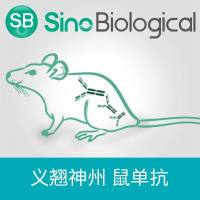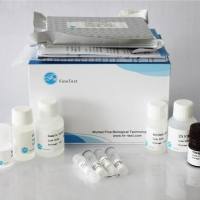The enzyme-linked immunosorbent assay (ELISA) technique offers a sensitive, simple, and versatile method for quantifying as little as 100 pg of target protein in mixed cell or tissue lysates. A further advantage to the protocol is the ability to process rapidly and reproducibly large numbers of samples with minimal equipment requirements. The underlying principle depends on formation of an antigen-antibody complex immobilized on plastic microtitre plates. Figure 1 illustrates the basic methodology. In the antibody-sandwich ELISA, a primary antibody directed against a protein of interest is bound (adsorbed) to the bottom of a polystyrene well (Fig. 1
A ). A mixed protein lysate is added to the well and the target protein is “captured” onto the solid phase by interaction with the capture antibody (Fig. 1
B ). A second antibody recognizing a different antigenic determinant on the target protein is added (Fig. 1
C ). The resulting antibody-antigen-antibody sandwich is detected with an enzyme-linked secondary antibody (Fig. 1
D ) followed by incubation with a suitable enzyme substrate. Substrate hydrolysis results in a detectable color change (Fig. 1
E ) and is proportional to the amount of captured protein. At each step, the antibody sandwich is separated simply and effectively from unbound conjugate by repeated washes. Sensitivity can be increased further by secondary and tertiary immunogenic enhancement.
Fig. 1. Basic principles of the antibody-sandwich ELISA. The antibody-sandwich protocol is the most sensitive of the ELISA methods.








